News
New York Bill Aims to Ban New Mega-Dairies
Law & Justice•6 min read
Reported
The Chinese vessels—numbering nearly 800 in 2019—appear to be in violation of UN sanctions that forbid foreign fishing off the coast of North Korea.
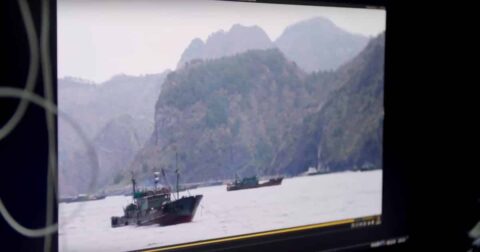

Words by Ian Urbina
OFF THE COAST OF SOUTH KOREA — The battered wooden “ghost boats” drift through the Sea of Japan for months, their only cargo the corpses of starved North Korean fishermen whose bodies have been reduced to skeletons. Last year more than 150 of these macabre vessels washed ashore in Japan, and there have been more than 500 in the past five years.
For years the grisly phenomenon mystified Japanese police, whose best guess was that climate change pushed the squid population further from North Korea, driving the country’s desperate fishermen dangerous distances from shore, where they become stranded and die from exposure.
But an investigation conducted by an international team of academic researchers, Ian Urbina a former New York Times investigative reporter who now directs The Outlaw Ocean Project, and Global Fishing Watch, a non-profit organization that specializes in the use of satellite technology and Artificial Intelligence to track illegal activities on the high seas, based on new satellite data has revealed what marine researchers now say is a more likely explanation: China is sending a previously invisible armada of industrial boats to illegally fish in North Korean waters, violently displacing smaller North Korean boats and spearheading a decline in once-abundant squid stocks of more than 70 percent.
The Chinese vessels—nearly 800 in 2019—appear to be in violation of UN sanctions that forbid foreign fishing in North Korean waters. The sanctions, imposed in 2017 in response to the country’s nuclear tests, were intended to punish North Korea by not allowing it to sell fishing rights in its waters in exchange for valuable foreign currency.
“This is the largest known case of illegal fishing perpetrated by a single industrial fleet operating in another nation’s waters,” said Jaeyoon Park, a data scientist from Global Fishing Watch.
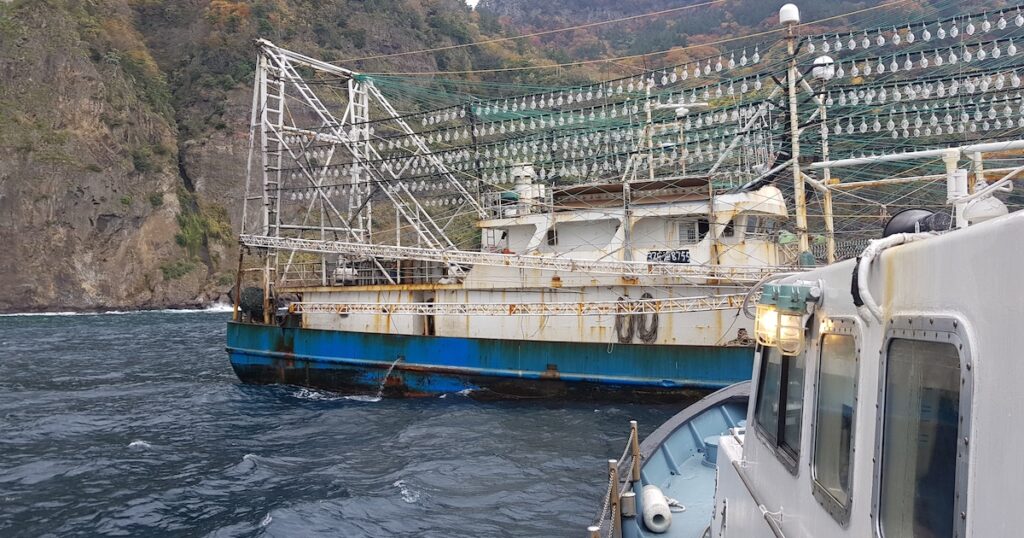
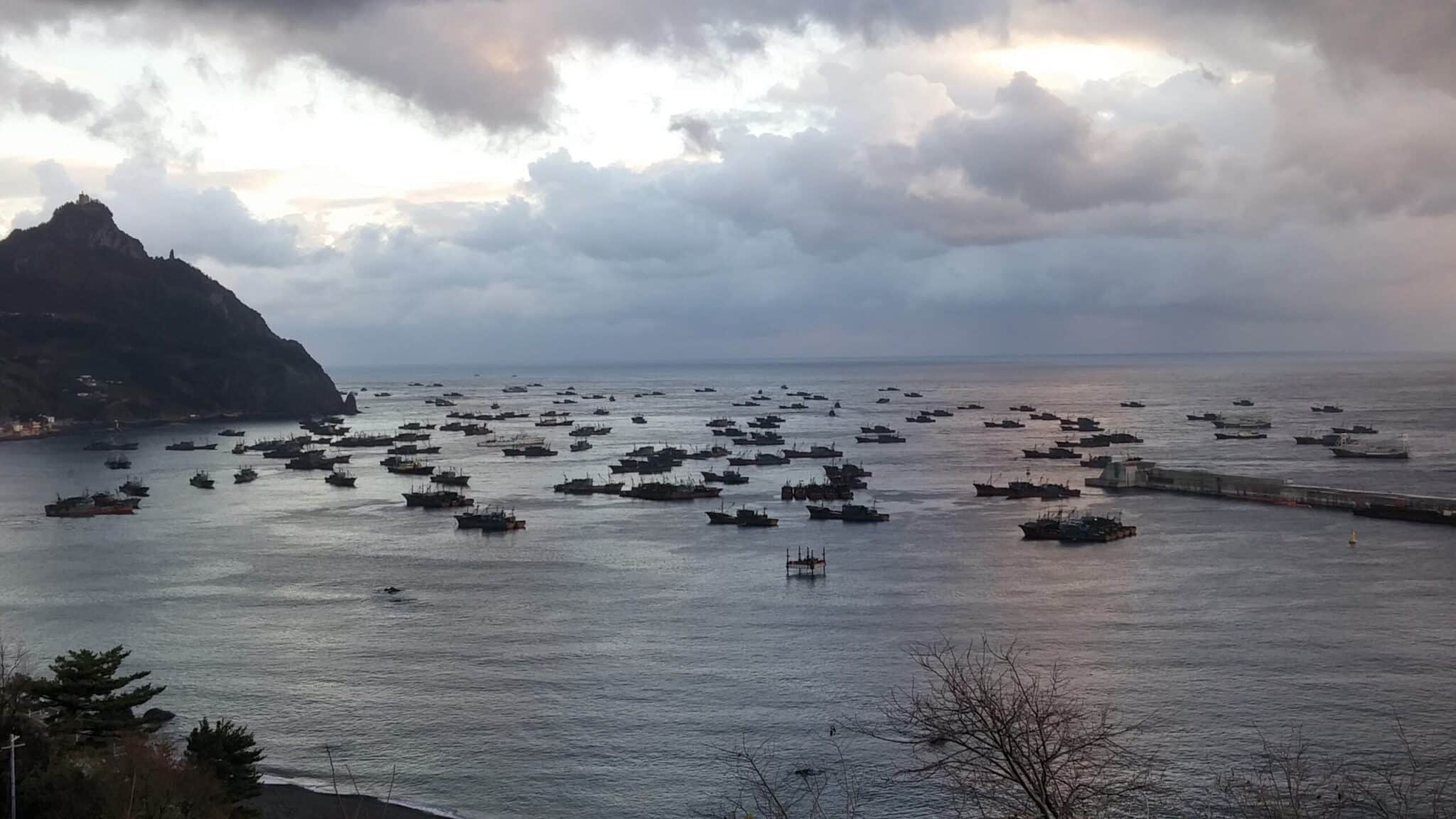
China is a member of the UN Security Council, which unanimously signed the recent North Korean sanctions. But the flotilla violating this ban comprises nearly a third of the entire Chinese distant-water fishing fleet, according to Global Fishing Watch.
Presented with the findings of the investigation, the Chinese Ministry of Foreign Affairs said that, “China has consistently and conscientiously enforced the resolutions of the Security Council relating to North Korea.” The ministry added that China has “consistently punished” illegal fishing.
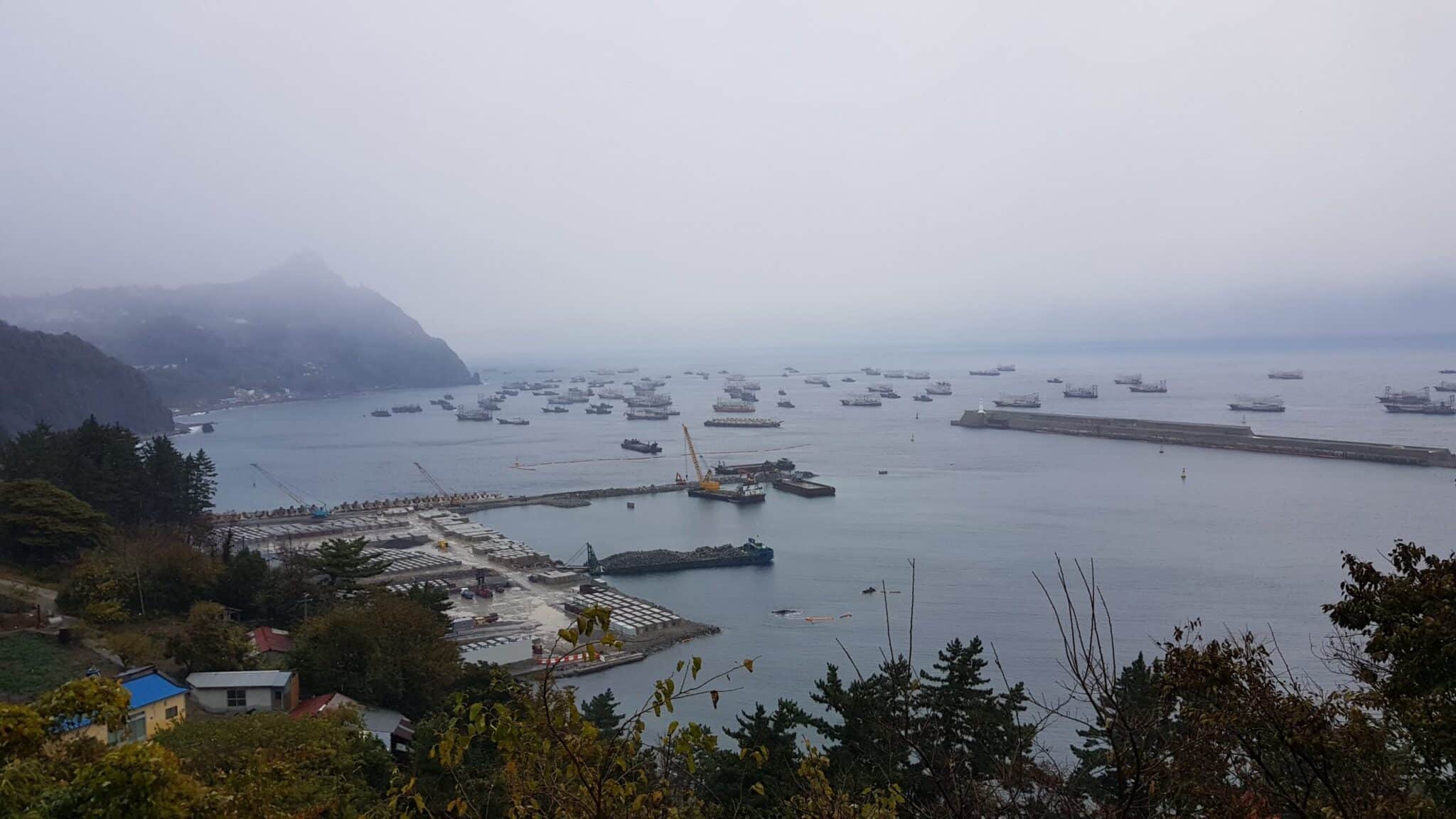
In March, two countries anonymously complained in a report to the UN about China’s violations of these sanctions and they provided evidence of the crimes, including satellite imagery of the Chinese ships fishing in North Korean waters and testimony from Chinese fishing crew who said they had alerted the government of their plans to fish in North Korean waters.
The fishing grounds in the Sea of Japan, known in the Koreas as the East Sea, are located between the Koreas, Japan, and Russia, and include some of the world’s most contested and poorly monitored waters. Up to now, the huge presence of Chinese boats in this area was largely hidden, because their captains routinely turn off their transponders, making them invisible to on-land authorities, which under most conditions is illegal.
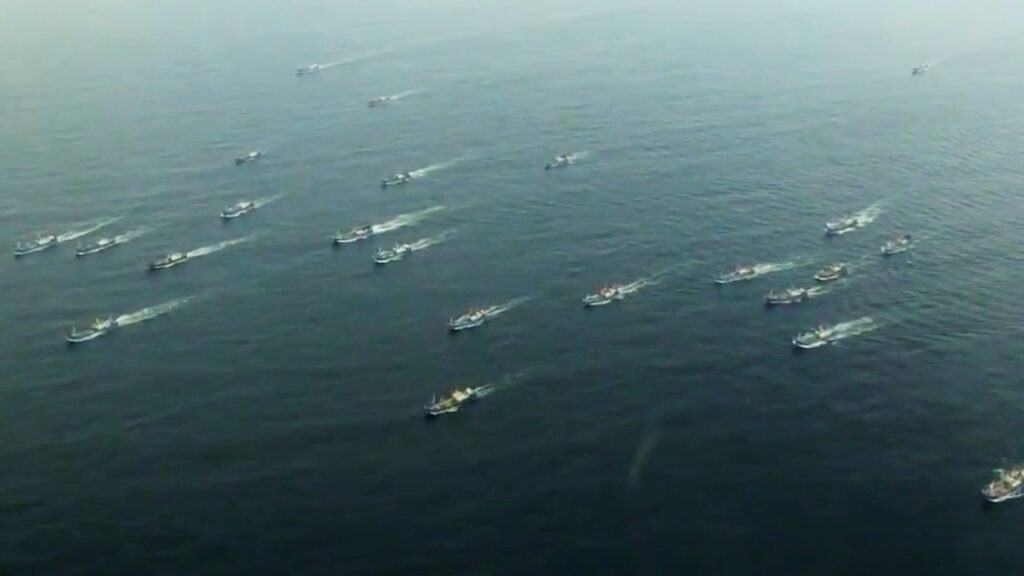
Global Fishing Watch and its partner researchers were able to document these vessels, however, using several types of satellite technology, including one that spots bright lights at night. Many squid boats use extremely strong lights to draw their prey nearer to the ocean surface, making the squid easier to catch. Chinese fishermen also use what are called “pair trawlers,” which consist of two side-by-side boats with a net strung between them that combs the seas, which are easier to track by satellite since the two travel together.
So many North Koreans have disappeared at sea in recent years that some North Korean port towns, including Chongjin along the country’s eastern shore, are now called “widows villages.” Last year, more than 50 bodies of North Koreans washed onto Japanese beaches, according to the Japanese Coast Guard.
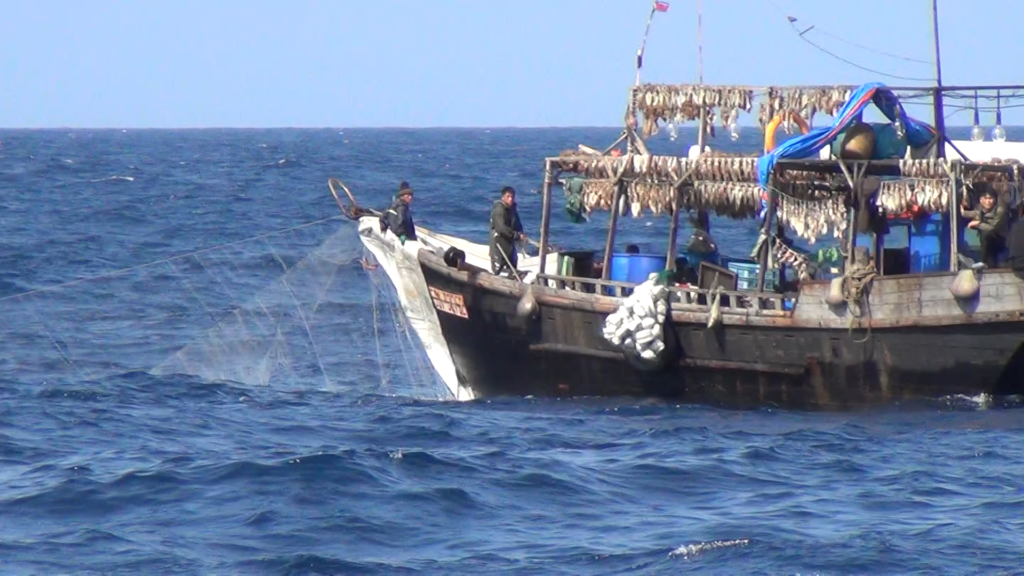
The grim uptick of these ghost boats washing ashore has stoked paranoia and inflamed a tense history between Japan and North Korea, leading some in Japan to speculate that the ghost boats are carrying spies, thieves, or possibly even weaponized carriers of contagious disease.
“If a Korean ship lost its way, it would be destroyed by the time it lands on our beaches,” said Kazuhiro Araki, CEO of the Abduction Research Organization, a group that studies the history of hundreds of Japanese citizens who were allegedly kidnapped by North Korea in the 70s and 80s. “But some ships arrived to our coast intact, and with no men on board, and its possible those people are spies who made it to land.”
Encrusted with shells and algae, these flat-bottom wooden boats are 15 to 20 feet long and typically carry five to 10 men. They have no toilets or beds, just small jugs of clean water, fishing nets, and tackle, according to Japanese Coast Guard investigation reports. They fly tattered North Korean flags and their hulls are often emblazoned with painted numbers or markings in Korean script including, “State Security Department” and “Korean People’s Army.”
All of the bodies found onboard these ghost boats appear to be male, though some were so badly decomposed that Japanese investigators struggled to say for sure. Political tensions between the countries and a lack of transparency in the so-called “Hermit State” of North Korea make it difficult to get an official explanation of the phenomenon.
In 2004, China signed a multi-million-dollar fishing license agreement with North Korea that led to a drastic increase in the number of Chinese boats in North Korean waters. But international sanctions imposed in 2017 in response to North Korea’s intercontinental ballistic missile launches and nuclear tests were meant to squeeze key sources of North Korean revenue.
A long-time benefactor of North Korea, China signed the sanctions after being pressured by the United States, and in August 2017 China’s minister of commerce publicly reiterated his government’s commitment to enforcing these new rules.
Seafood remains North Korea’s sixth-biggest export and in recent speeches, the country’s dictator, Kim Jong Un, has pushed the state-owned seafood industry to increase its haul.
“Fish are like bullets and artillery shells,” an editorial in the Rodong Sinmun, the official newspaper of the ruling Workers’ Party of Korea, said in 2017. “Fishing boats are like warships, protecting the people and the motherland.”
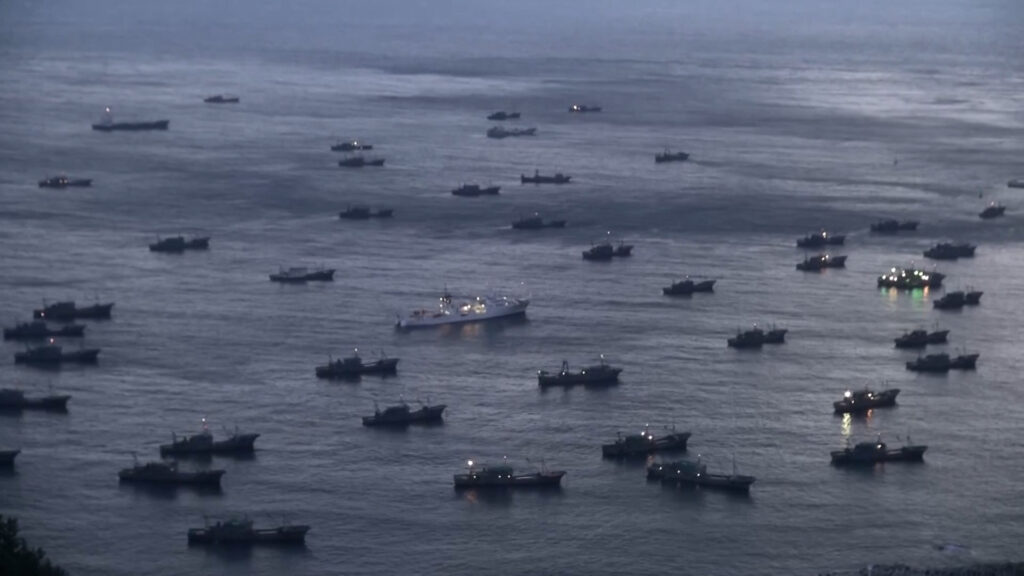
In the wake of the UN sanctions and as foreign currency reserves have dwindled, the North Korean government has tried to bolster its fishing industry by turning soldiers into fishermen, dispatching these poorly-trained seafarers onto notoriously turbulent waters. The sanctions have also intensified North Korea’s gasoline shortage. Japanese investigators say that some of the Korean fishing boats washing onto Japanese beaches suffered from engine failure or simply ran out of fuel.
Since 2013, at least 50 survivors have been rescued from these dilapidated boats, but in interviews with Japanese police, the men rarely say more than that they were stranded at sea and that they want to be returned home to North Korea. Autopsies on the bodies found on these boats usually indicate that the men starved or died from hypothermia or dehydration.
In 2013, North Korean fishermen were limited by the capacity of their 12-horsepower engines and they typically only traveled several dozen miles from land, said a former North Korean fisherman, who defected to South Korea in 2016 and now lives in Seoul.
“Government pressure is greater now, and there are 38-horsepower engines,” said the defector, who asked to remain anonymous for fear of repercussions for his family. “People are more desperate, and they can go farther from shore.”
But marine researchers say that pressure from the North Korean government is not the only factor.
“Competition from the industrial Chinese trawlers is likely displacing the North Korean fishers, pushing them into neighboring Russian waters,” said Jungsam Lee, whose institute also found hundreds of North Korean vessels fished illegally in Russian waters in 2018.
In 2017, the Japanese Coast Guard also reported spotting more than 2,000 North Korean fishing boats fishing illegally in their waters. In more than 300 instances, the Japanese Coast Guard used water cannons to force these boats to leave the area.